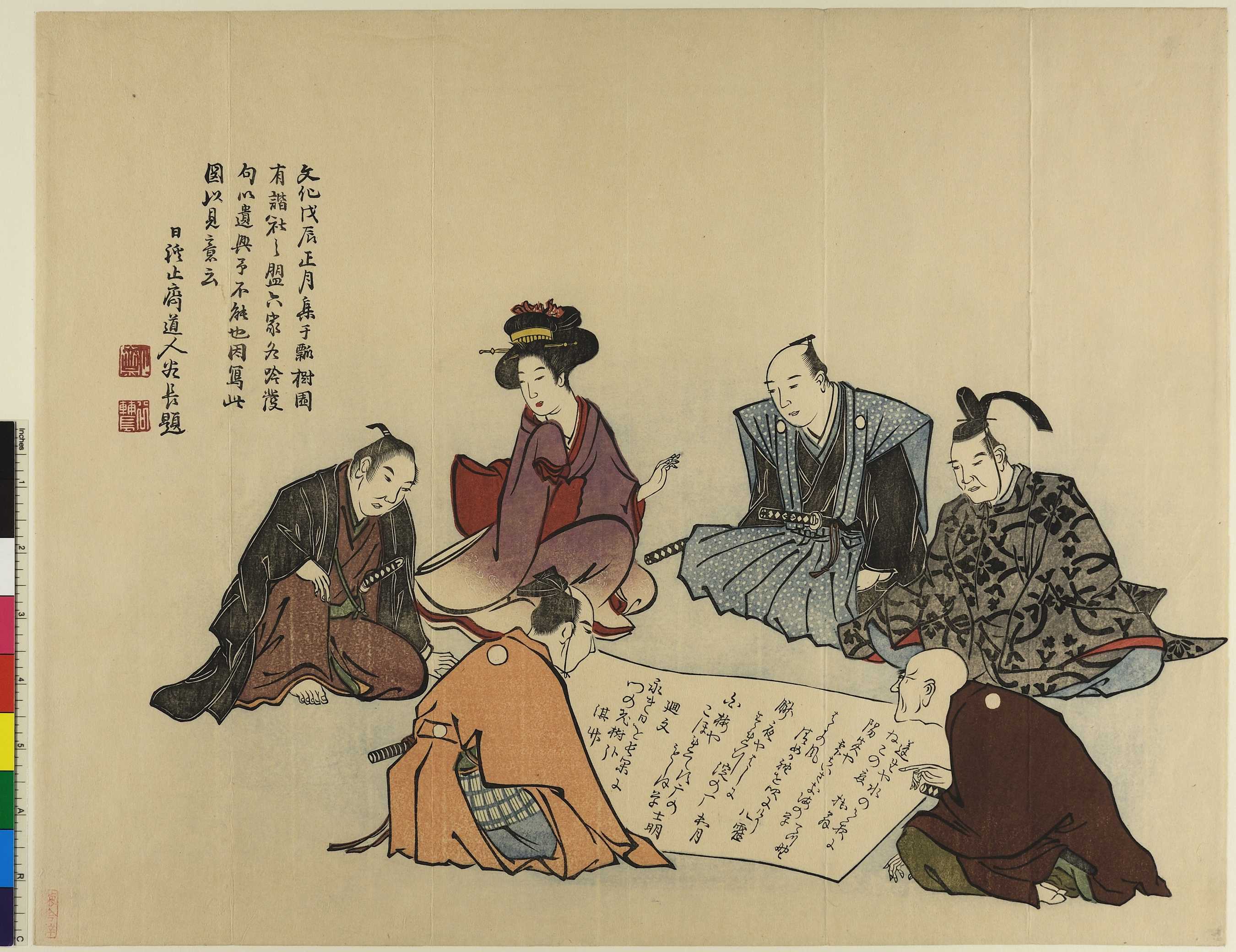幕末明治の京都・大阪における文化サロン人物ネットワークのデータアーカイブと分析システム
-
AKAMA Ryō (Art Research Center, Ritsumeikan University, Kyoto) 赤間 亮(立命館大学アート・リサーチセンター)
This project aims to clarify how human networks affected the places where cultural activities such as painting, calligraphy, performing arts, and scholarship took place in the Kansai region from the late modern period to the Meiji era. Even if we limit the scope of the period, the information on people involved in cultural activities is voluminous, and it is not easy to grasp the full picture.
In promoting this project, the Art Research Center of Ritsumeikan University aimed to create a research platform that would contribute to the creation of a large-scale digital archive of information, and to take the project to a higher level based on its results even after the project was completed. The project was obliged to conduct its research activities in accordance with the conditions attached to the research funding it received - a proposal for a methodology to deal with pandemics such as Covid-19. To this end, the project is committed to incorporating Digital Humanities methodologies. Digital humanities is generally understood as the incorporation of digital technologies into humanities research. However, it is not a matter of blindly applying various technologies, and the procedures are somewhat established depending on the subject matter of the research. In the case of historical cultural resources, as in this project, we will proceed through the following four steps.
- digitizing the materials
- creating a database (big data construction)
- applying analytical tools
- discussing the results.
Of these, the key point is the construction of big data to such an extent that it requires the help of computers. Without this accumulation of data, it is impossible to go beyond conventional methods.
Therefore, although modest, we have been working vigorously on steps 1 and 2 of the above steps. In this talk, I will introduce the status of 1 and explain the method of 2. I would like to explain that this human network research platform will continue to be used in the future. For 3, I will present a network visualization tool that is currently under development.
このプロジェクトでは、近世後期から明治までの関西エリアにおいて、絵画や書、芸能、学問などの文化的活動が行われた場に、人的なネットワークがどのような効果を生んでいたのかを明らかにしようとしている。時代の幅を限定したとしても、文化活動にかかわる人物情報は膨大なものとなり、全貌を把握するのは容易ではない。
立命館大学アート・リサーチセンターは、このプロジェクトの推進にあたり、大規模な情報デジタルアーカイブを構築することで、プロジェクトがいったん終了したあとも、その成果を踏まえたさらなる高みへとつなげることに貢献する研究基盤を成立させることを目指した。そこには、プロジェクトが獲得した研究資金に付与された条件―「Covid-19」のようなパンデミックに対処するための方法論の提案―を踏まえた研究活動が義務付けられていた。そのため、このプロジェクトでは、デジタル・ヒューマニティーズの手法を取り入れることに尽力している。デジタル・ヒューマニティーズは、一般的に人文学分野の研究にデジタル技術を取り入れるものと理解されているであろう。しかし、さまざまな技術をやみ雲に適用すればよいものではなく、研究対象によってその手順がある程度定着している。このプロジェクトのような歴史的な文化資源を対象とする場合には、次のような四段階を進んでいくことになる。
1.資料のデジタル化、2.データベース化(ビッグデータ構築)、 3.分析ツールの適用、4.結果の考察
このうち、キーポイントは、コンピュータの助けを借りる必要があるほどのビッグデータの構築である。このデータ蓄積がなければ、従来の方法を超えることはできない。
したがって、地味ではあるが、上記の段階の内、1・2を精力的に行ってきた。本発表では、1の状況を紹介し、2の手法について説明する。この人物ネットワーク研究基盤が今後も継続的に活用出きることを述べたい。また今回、3については、現在開発中のネットワーク可視化ツールを紹介する。
動画 (要パスワード)
-
関連記事

